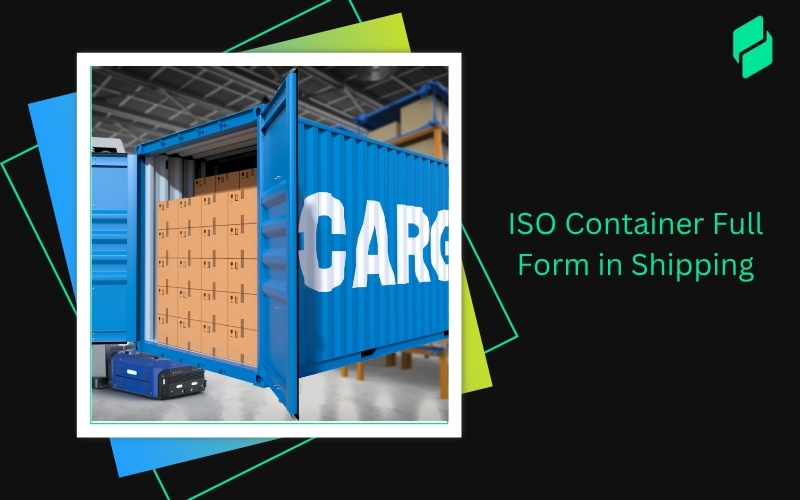Optimize your business: use unlimited savings with Pazago fulfilled now!
Get Started ->Imagine a world where every link in your supply chain operates seamlessly, anticipating and adapting to disruptions before they happen. This is not a distant dream but a reality shaped by rapid technological advancements today.
The trends in supply chain management are evolving at a pace that can be both exhilarating and challenging to keep up with.
But what exactly are these trends, and how are they transforming the landscape of supply chains? Let’s explore.
Rapid Technological Advancements Shaping the Future of Supply Chains
In today’s digital age, the supply chain landscape is radically transforming. From artificial intelligence (AI) to the Internet of Things (IoT), emerging technologies are enhancements and essential drivers of change.
For instance, AI is revolutionizing demand forecasting, making predictions more accurate than ever, while IoT devices track shipments in real time, ensuring they are always where they need to be.
Consider this: 45% of companies believe integrating AI into supply chains will be a major driver of cost reduction. Isn't it impressive how technology can fine-tune our anticipations of the market?
Pazago’s digital software can help streamline such integrations, enhancing overall supply chain efficiency.
The Role of Digitization in Transforming Supply Chain Resilience and Efficiency
Now, more than ever, resilience and efficiency are at the forefront of supply chain management. The past few years have tested the robustness of global supply networks, revealing vulnerabilities and opportunities for significant enhancements through digitization.
Digital tools provide transparency and foster a more interconnected and robust supply chain. They enable companies to respond swiftly to disruptions, adapt to changes, and maintain operations even in uncertain times.
For example, during recent global disruptions, companies with digitally agile practices were able to reroute their logistics and minimize downtime quickly.
Have you ever experienced a delay in your order and wished things were faster? That's exactly the pain point digitization aims to solve, ensuring that your next order arrives on time, no matter the global circumstances.
Platforms like Pazago’s Portal can provide such agility, ensuring that operations remain fluid under challenging conditions.
Also Read: Emerging Logistics Tech Trends and Their Meaning
Generative AI in Supply Chain Operations

1. Evolving Capabilities and Applications of Generative AI
Have you ever imagined a technology that follows instructions and generates new ideas? That's the promise of generative AI in supply chain management. According to a survey, 40% of supply chain organizations plan to implement generative AI within the next 12 months.
This AI doesn't just automate tasks; it innovates, creating solutions that optimize operations from procurement to delivery. For instance, it can simulate and predict outcomes for different supply chain strategies, offering previously unthinkable insights.
2. Improving Procurement Compliance and Manufacturing Workflows
How often have you heard of disrupted supply chains due to compliance issues or inefficient workflows? Generative AI streamlines and enhances compliance processes and manufacturing operations.
By generating and evaluating complex data patterns, AI tools can suggest optimizations that comply with global standards and improve workflow efficiency, thus minimizing delays and reducing waste.
3. Enhancing Virtual Logistics Communication through AI
Imagine if every logistic operation communicated flawlessly, with real-time updates and zero misunderstandings. Generative AI is turning this into a reality by enhancing virtual logistics communications.
Through advanced natural language processing, AI facilitates clearer, more effective communication between stakeholders, ensuring everyone is on the same page.
Imagine if every logistic operation communicated flawlessly, with real-time updates and zero misunderstandings. Using Pazago’s platform, businesses can effortlessly achieve this level of efficiency.
Digital Twins for Supply Chain Management

1. Real-time Analytics and Data for Disruption Avoidance
Wouldn't you want a preemptive solution in a world where a minute of downtime can lead to substantial losses?
Digital twins in supply chain management serve as virtual replicas of physical systems, providing real-time analytics that help predict and avoid potential disruptions. This technology enables businesses to simulate scenarios and plan responses before issues arise, ensuring continuity and efficiency.
2. Extending Benefits to Broader Sectors Beyond Traditional Supply Chain Management
What if the benefits of digital twins could be applied beyond traditional supply chains? Today, healthcare and retail sectors are adopting digital twin technology to enhance their operations. These applications help manage everything from inventory levels to emergency responses, broadening the scope of digital twin benefits across various industries.
Also Read: Bullwhip Effect: Causes, Impact and Solutions in Supply Chain Management
Blockchain for Enhanced Transparency

1. Facilitating End-to-End Visibility in Supply Chains
In the supply chain sector, blockchain is poised to revolutionize how transactions and operations are managed and recorded.
For example, blockchain in supply chain management helps with the real-time tracking of commodities and products as they move through different stages of the supply chain, enhancing the security and transparency of these transactions.
The Blockchain Supply Chain Market is projected to grow from $0.84 billion in 2024 to $6.31 billion by 2029, growing at a CAGR of 49.87%, driven by a demand for greater transparency and security in supply chain transactions. (Source)
2. Utilizing Immutable Records for Deeper Insight into Transactions
Blockchain doesn't just track information; it secures it. Immutable records ensure that data cannot be altered once it is entered, thus providing deeper insights into each transaction. This level of detail and security fosters trust among trade partners and enhances decision-making capabilities.
Also Read: Understanding the Importance and Strategies of Retail Supply Chain Management
Cloud-Based Technologies and Their Impact

1. Data Governance and Cloud Technology
Gartner highlights the importance of data governance in the supply chain, which is facilitated by cloud technologies. These tools are crucial for maintaining high data quality and governance, essential for advanced analytics and AI in supply chain operations (Source).
2. Expected Market Growth and Advantages of Cloud-Based Solutions
The market for cloud-based supply chain solutions is expected to grow significantly, driven by the need for greater efficiency and agility.
According to recent statistics, the global cloud supply chain management market is projected to reach $71.93 billion by 2030.
Cloud-based solutions offer advantages such as lower IT costs, enhanced data security, and the ability to scale operations quickly. These benefits make cloud computing an essential trend in supply chain management.
Also Read: What Are E Supply Chain Management?
Supply Chain as a Service (SCaaS)

1. Outsourcing SCM Operations for Enhanced Efficiency
In a fast-paced world, focusing on your core business is crucial. Outsourcing supply chain management to SCaaS providers can significantly enhance operational efficiency.
These providers use their expertise to manage your supply chain, from logistics to inventory management, allowing you to concentrate on growth and innovation.
2. Focus on Core Competencies While Leveraging Advanced SCM Tools
Why juggle multiple responsibilities when you can excel in your specialties? SCaaS allows businesses to leverage advanced tools and technologies without directly understanding or investing in them.
This approach not only streamlines operations but also boosts overall productivity and profitability.
Also Read: Understanding and Reducing Logistics Costs: Types and Measurement Methods
AI-Enabled No Touch / Low Touch Planning

1. Reducing Manual Work and Improving Analytics in Planning
Are you tired of the tedious manual processes that dominate your planning activities? AI-enabled no-touch/low-touch planning systems are revolutionizing this by automating mundane tasks and improving analytics.
These systems leverage machine learning algorithms to predict market demands and optimize supply chain responses, significantly enhancing efficiency and accuracy.
2. Utilizing AI for Better Margins and Decision-Making Processes
Imagine a system that automates and enhances decision-making capabilities, leading to better profit margins. AI-driven tools analyze vast amounts of data to provide insights that help make informed decisions quickly.
This translates to improved margins by optimizing procurement and distribution strategies based on predictive analytics.
Also Read: Introduction to Ocean Freight Management Software and Its Services
5G Networks in Supply Chain Management

1. Improving Connectivity and Support for IoT Devices
With the rollout of 5G networks, the connectivity across supply chains is set to improve exponentially. This enhancement is crucial for the effective functioning of IoT devices, which rely on real-time data exchange.
5G ensures these devices communicate more efficiently, leading to streamlined operations and reduced downtimes.
2. Enhancing Communication and Critical Aspects of Supply Chain Operations
Ever wondered how faster communication could transform supply chain operations? 5G networks provide ultra-fast communication speeds and lower latency, vital for coordinating complex supply chain activities.
This improved communication capability is essential for critical operations, ensuring that information flows seamlessly across the supply chain.
Internet of Things (IoT) Advancements
1. Increasing IoT Deployment for Better Visibility and Connectivity
The deployment of IoT technology in supply chains is growing, offering unprecedented visibility and connectivity across operations. IoT systems enable real-time asset tracking, inventory management, and enhanced data collection, leading to more connected and responsive supply chains.
2. Application in Warehouse Management and Transportation
IoT is not just about connectivity; its warehouse management and transportation applications are transforming these areas. Smart sensors and trackers provide constant data on inventory levels, vehicle locations, and environmental conditions, ensuring efficient warehouse operations and transportation logistics.
Wouldn’t it be beneficial to have a tool that connects all these IoT devices seamlessly? Pazago's real-time shipment tracking can offer the visibility needed.
Elastic Logistics
1. Flexibility to Adapt to Market Changes and Innovations
Elastic logistics allows companies to scale their operations up or down based on market demands and innovations. This flexibility is crucial for adapting to sudden changes in the market, such as fluctuating consumer demand or supply chain disruptions, ensuring business continuity and efficiency.
2. Addressing Challenges of Overstocking and Underutilization
Are you facing issues with overstocking or underutilization of resources? Elastic logistics provides solutions by adjusting resource allocation in real time. This adaptability prevents excess inventory and underutilization, optimizing the overall supply chain performance.
Are you facing issues with overstocking or underutilization of resources? Platforms like Pazago can provide scalable solutions to adapt to these changes.
Also Read: Logistics Park: The Core of Logistics Operations
Cybersecurity in the Digital Supply Chain

1. Addressing Global Threats with Core Security Measures
In an era where cyber threats are increasingly global, implementing robust cybersecurity measures is essential. Protecting digital supply chains from these threats involves deploying advanced security protocols, regular audits, and continuous monitoring to safeguard sensitive data and operations.
2. Implementing a Risk-Based Approach to Safeguard Digital Assets
A risk-based approach to cybersecurity ensures that resources are allocated efficiently to protect the most critical digital assets. This strategy involves identifying potential risks, assessing their impact on the supply chain, and implementing targeted security measures to mitigate them effectively.
Conclusion
Adopting digital trends in supply chain management is crucial for staying competitive in today's fast-evolving market. Integrating technologies like AI, IoT, and blockchain enhances efficiency, agility, and transparency, enabling businesses to respond swiftly to changes and disruptions.
Continual innovation drives the industry forward, making the embrace of these advanced technologies not just beneficial but essential for success.
Are you prepared to leverage these trends to transform your supply chain operations?
Leveraging technologies through platforms like Pazago could transform your supply chain operations effectively.
Explore Pazago Software Now


.png)








